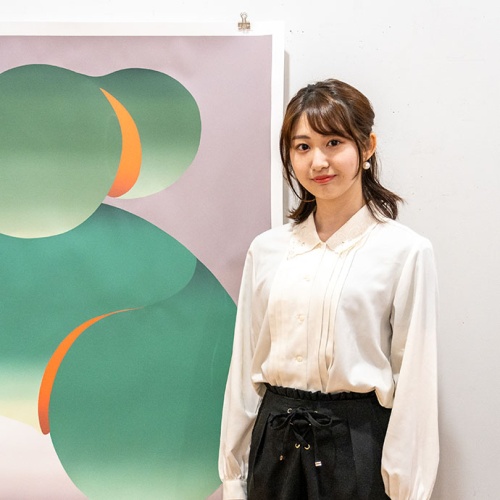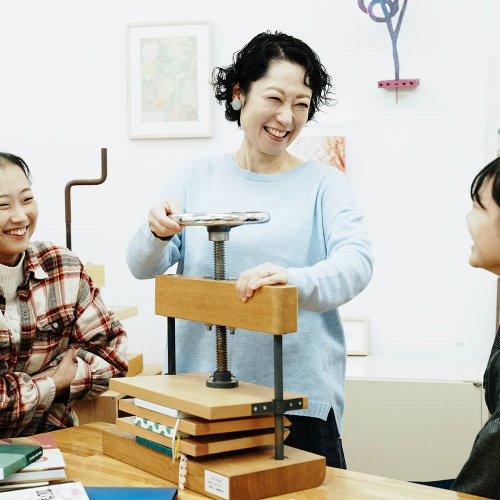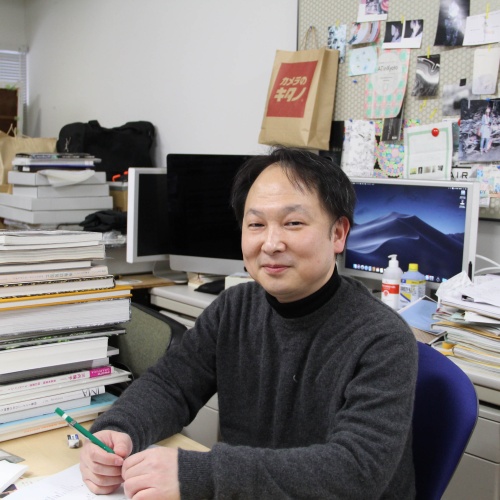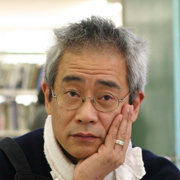
IKEGAKI Tadahiko
- Specialization
- Sculpture / Etching / Silkscreen
[Studio Art / Year 2]
Over the course of a year, students learn the basics of creative expression in a broad range of media, including woodblock and copperplate printing, lithography, silkscreen, photography, and digital creation. Students are exposed to a variety of materials and techniques to find their preferred means of expression. At the same time, they learn to pick the materials and methods that are best suited to achieving their objectives.
[Graduation Research Practicum 1 & 2 / Year 4]
Students create pieces while considering print editions, one of the unique characteristics of printmaking. They also help produce KINO PRINT, a collection that compiles all the students' work, and design the collection box in addition to holding an exhibition. Faculty members and graduate students are also invited to participate in this tradition going back to the start of the course.
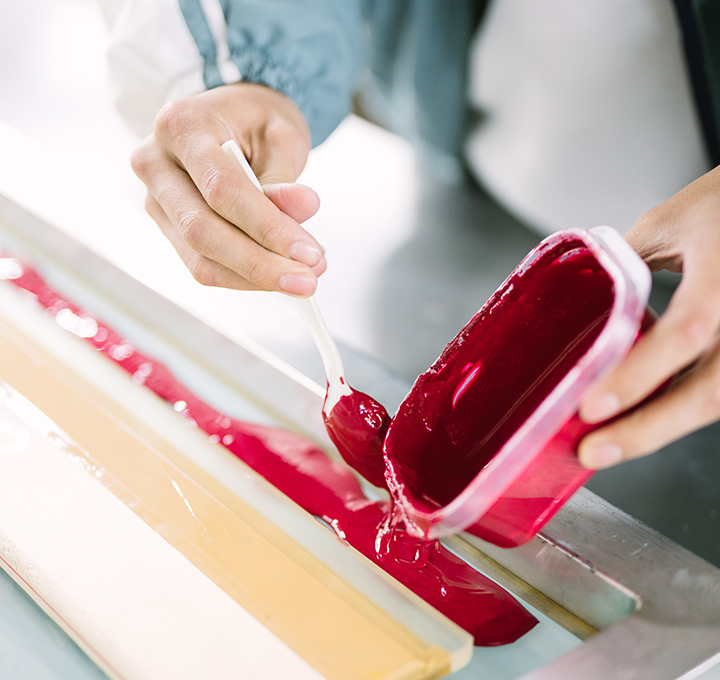
Students take cross-listed courses in the Faculty of Art to improve their observational skills, critical thinking, imagination, and other skills needed to build a firm artistic and creative foundation. They also learn the basics across all seven courses and start to explore which fields they would like to pursue.
In addition to the four print types of woodblock, copperplate, lithograph, and silkscreen, students also learn the basics of photography and digital printmaking techniques, exposing them to a variety of methods ahead of their third year of study.
Students are divided into workshops to study the printmaking and photographic techniques that interest them. They also deepen their understanding of book art, paper art, digital creation, and editing methods, exploring the techniques they feel most comfortable with.
Students work on their graduation projects, making full use of the skills and expressive abilities they have developed over the past four years. They aim to complete a work that fully encapsulates their pursuit of originality and individual expression in their final university project.
A variety of printing equipment is available in each workshop, including copperplate, lithograph, and silkscreen.
PICK UP!
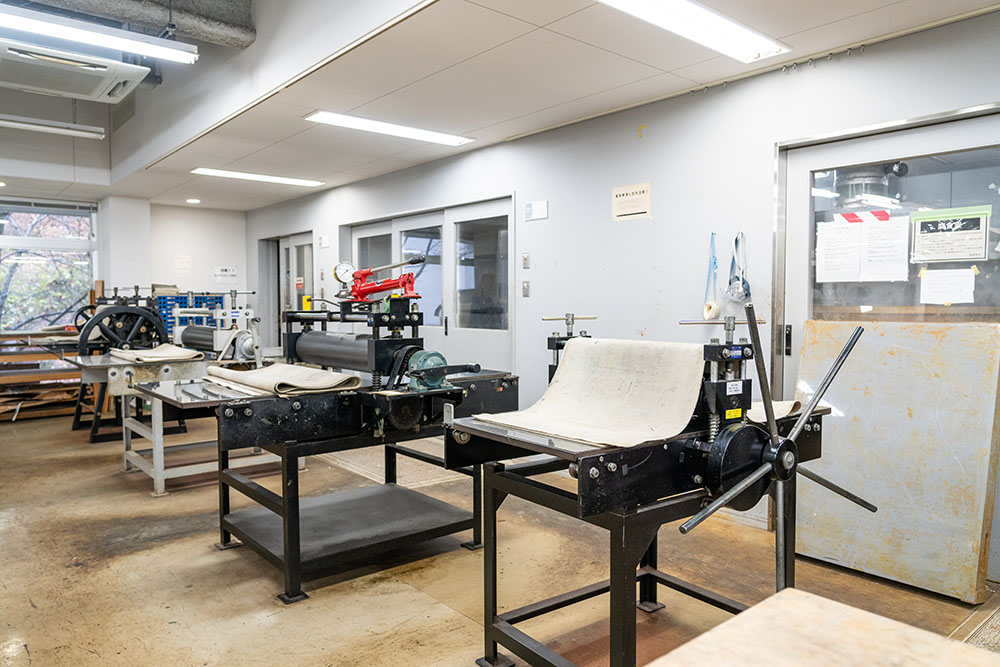
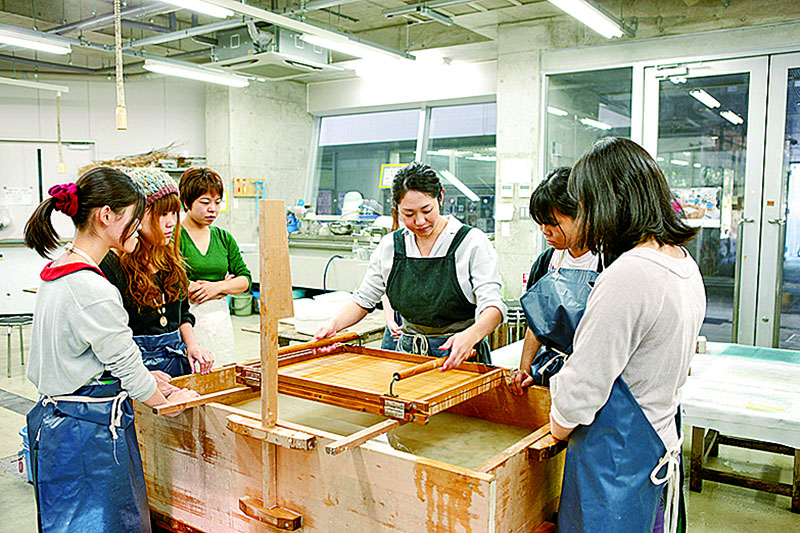
Students can also try their hand at paper sculpture in the papermaking studio.
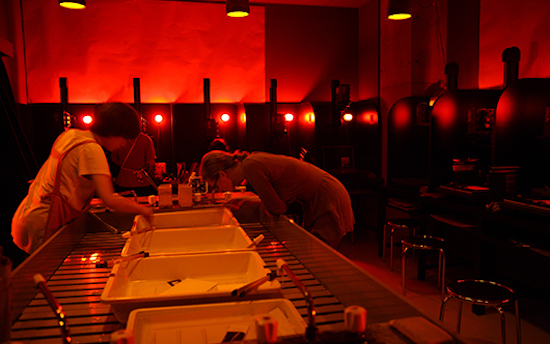
In a dedicated darkroom in the photography studio, students can do everything from developing film to printing their own photographs.
